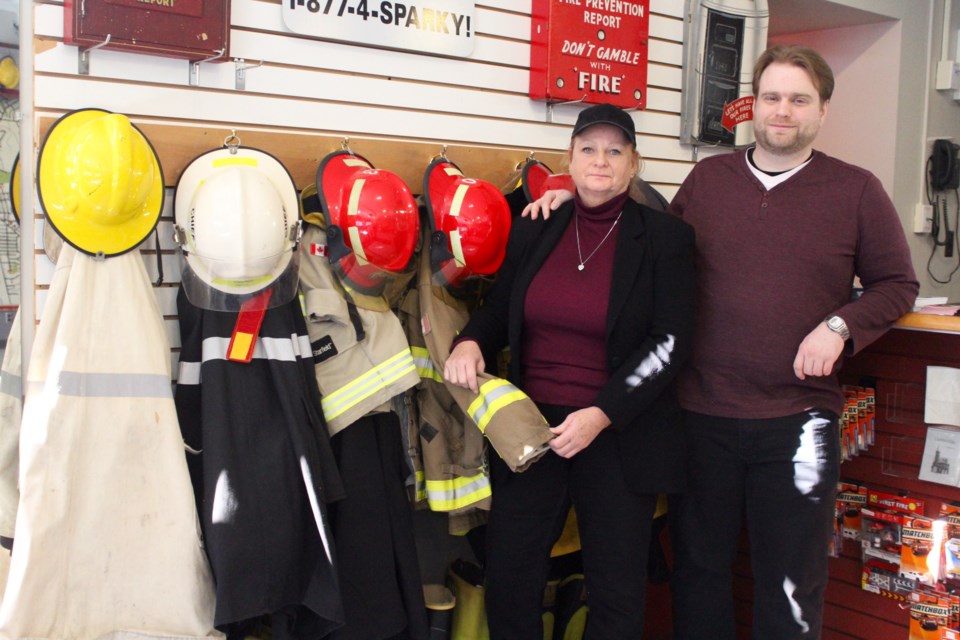The following article was previously published by CambridgeToday.
When retired Cambridge firefighter Kelley Willemze decided to enter the field over three decades ago, she thought she was well aware of the potential risks associated with the job.
Making a career out of running into burning buildings, vehicles and various other dangerous situations comes with the obvious hazards one can imagine.
What she didn't expect was the dangers involved with simply stepping into her turnout gear before ever arriving at a call.
Truth is, no firefighter knew until two years ago.
In 2022, the International Association of Fire Fighters (IAFF) and Metropolitan Fire Chiefs Association alerted its members of the impact of chemicals known as Polyfluorinated Substances (PFAS) that were being used in their gear to aid in repelling water and oil, which includes an increased risk of cancer and susceptibility to other diseases.
Through being exposed to heat, which causes sweating and the opening of pores, PFAS can be absorbed through the skin from the inner layer.
"I was shocked," Willemze said of finding out about the PFAS issue.
"You feel confident if you wear your personal protective equipment appropriately and you do everything the guidelines tell you to do, you're as safe as you can possibly be. So, to find out the gear that's supposed to be protecting us is in itself a carcinogen is pretty shocking."
Around the same time the information came out, Willemze's son, University of Waterloo engineering grad student Drew Davidson, was working on research regarding water repellent coatings.
While further examining how to keep freezing rain from sticking on surfaces, he realized how vast the use of PFAS is.
"It's one of the main culprits of the microplastics that get into the environment and stick around forever," Davidson said.
"I was already on the path to trying to think of an alternative to PFAS in general. I was just getting started and that's when my mom came to me with the issue with her gear."
Willemze had just attended a funeral for a colleague who died of cancer, one of several she's been to in the past few years, she said. And while there's no way to directly tie them to the use of PFAS given the multitude of chemicals a firefighter comes into contact with over the course of their career, it's become a cause for concern for the IAFF and union.
According to the IAFF website, the association retained three nationally recognized tort law firms in January 2023 to assist in an effort to end firefighter cancer and eliminate the use of PFAS in the fire service.
With personal concern for herself and colleagues mounting, Willemze turned to her son in hopes of using his knowledge to help.
"I thought about it for a second and realized it was really close to what I was already working on," Davidson said.
"So, I decided to start focusing on this instead."
Davidson owns both an undergraduate and master's degree from UW and is about to enter a PhD program in chemical engineering.
The development of a new material is still in the early stages, he said, as he's currently looking at different classes of fire resistant materials that haven't entered manufacturing.
Much of the work is centred around making sure whatever safer material is developed meets all the requirements behind the guidelines needed for a fire suit. Resistance to the fire, how it sheds the heat given off by the person wearing it and how it repels water all present a complex engineering challenge.
There is currently no alternative to the turnout gear firefighters wear and Davidson said through his discussions with various departments, they're aware of it being an issue but it's one they have to tolerate to mitigate the larger risk. However, they continue to ask questions and explore other options.
The Cambridge Fire Department has given each fire fighter a second set of gear. Once a call ends, the gear is bagged and cleaned, but not all fire departments have the funding or ability to provide that service, Willemze said.
It's even more of an issue for volunteer firefighters as they don't always have the luxury of knowing whether to wear it to a call or to have it cleaned properly.
Gear must also stay separated in bunker rooms in the fire hall and away from common areas, a drastic measure that hints at the severity of the issue.
"I'm worried," Willemze said of the health impacts she could face in the years to come.
"Our job is to try and eliminate as much risk as we possibly can and this is just one of the risks Drew is going to try and work on."
To aid in his work, Davidson received the inaugural deep tech commercialization scholarship from the university. The scholarship is directed at supporting engineering problems that can be built up into successful start up companies.
He also recently met with Ontario’s Solicitor General, Michael Kerzner, to discuss his findings and ongoing efforts.
Davidson doesn't want to put a timeline on such an important project but he's hopeful to have a prototype at some point soon with the eventual goal of getting it to manufacturing and into the market.
"We're pretty hopeful right now," he said.
"We're moving into the research. The hope is to create a material that fulfills all the needs of firefighters but eliminates the toxicity issue."



